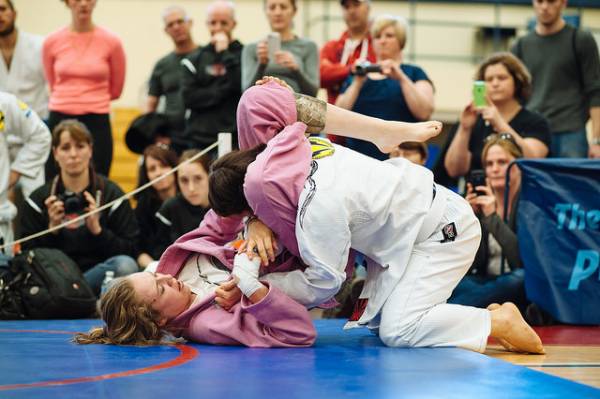Everyone has a first day. And that first day you walk into a Brazilian jiu jitsu academy can be a life-changing experience. Some people are confident and cannot wait to get on the mat. Others are scared, nervous, and unsure of what to expect. Regardless of how you feel at first, your feelings will likely change both during and after your first class.
As someone who has trained BJJ for a while, it is difficult to remember what it was like to be new. Over the past few days, while teaching classes at New Breed Training Center, I asked students what they wish they’d known when they started BJJ. Some of the questions below are from students who have been training less than a month. Others are from those with a little more experience.
For the students just starting out, the questions and answers below will help you gain an understanding of what it was like for others when they started training. For the more experienced, the questions offer an opportunity for us to reflect back on what it was like to be new.
What Is the Practical Application of the Warm Up?
Before this question can be answered, we must define what exercises are included in the warm up. This can vary depending on the school, but we will use what is typical of most BJJ classes.
Most warm-up sessions include specific BJJ movements, such as hip escapes, bridges, and breakfalls. There is typically also a movement drill with a partner, like a basic guard composition drill.
Warm-up drills serve two purposes:
- They prepare the body for the specific movement patterns of BJJ. One of the hardest things for new students is learning how to use their body as one unit.
- Warm-up movements are the foundation for technical work. An example is the bridge. The bridge is used to umpa someone from the mount, but it can also be used to sweep from the half guard. The grips and technical detail are different for the mount escape and the half guard sweep, but the bridge is involved in both.
Grappling also requires specific conditioning that can only be gained by grappling. Running develops muscular endurance for running, but not for BJJ. Drills are a great way to condition the body in the specific movement patterns of BJJ. And don’t worry – it is normal to feel tired during this part of class. It happens to everyone, including myself.
“For the first few months, everything is going to seem difficult and frustrating. Then, one day, things start to click.“
I remember my first few classes – I was gassed just from the warm up. I thought to myself, “But I am in good shape. I played football in college and was doing judo before I started BJJ.” But I struggled just like everyone else on the first day. I wish someone had told me how cardio-intense BJJ is.
How Important Is Every Detail of a Technique?
This question can have many answers since every instructor have his or her own opinion. In my opinion, every detail is important. But when you first start, there is so much going on that trying to remember every detail is going to be difficult.

If you are having a hard time learning techniques, start by getting the positioning down and a sense of how your body should feel in that position. For example, new students frequently struggle with the armbar from the guard. Often, this is because of the hip movement involved with getting into the proper position. So, a good place to start would be to focus on getting in the proper position first. Then, all the little details that follow will become easier.
How Often Should I Train?
When you’re new and excited about doing something new, it’s common to want to train every day, sometimes multiple times a day. We think doing think will get us better faster. Unfortunately, that type of thinking can manifest in the opposite result. BJJ is a marathon, not a sprint.
“[W]hen you first start, there is so much going on that trying to remember every detail is going to be difficult.”
Training frequency has to be specific for each student’s needs and goals. Training too often is not good, but training too little is not productive either. An optimal training frequency is one that can be maintained for a long time – and that may be different for each athlete.
The best way to determine the best frequency for you is to focus on your recovery. Ask yourself how many days a week you can train while fully recovering after each session. It is better to train two days a week for a year, than five days a week for a few months. The goal is to be in the sport for the long term. BJJ is not one of those sports where we get better at in just a few months. It takes years of training.
Conclusion
Everyone who trains Brazilian jiu jitsu has overcome the jitters and nervousness that come with the first day. For some, that same feeling may continue on for longer. It is important to know these feelings are normal.

For the first few months, everything is going to seem difficult and frustrating. Then, one day, things start to click. Sometimes this moment happens when you see another new student walk in and see the struggles he or she is going though – and realize you have come a long way.
If you are already an experienced practitioner, remember what it was like at the beginning. It is up to those of us with experience to welcome new students to the team and make them feel comfortable.
Check out these related articles:
- Drilling the Basics for BJJ Success
- Too Much BJJ Can Be a Bad, Bad Thing
- How Much Training Do Grapplers Need?
- What’s New On Pulse Beat Fit Today
Photos courtesy of David Brown.






